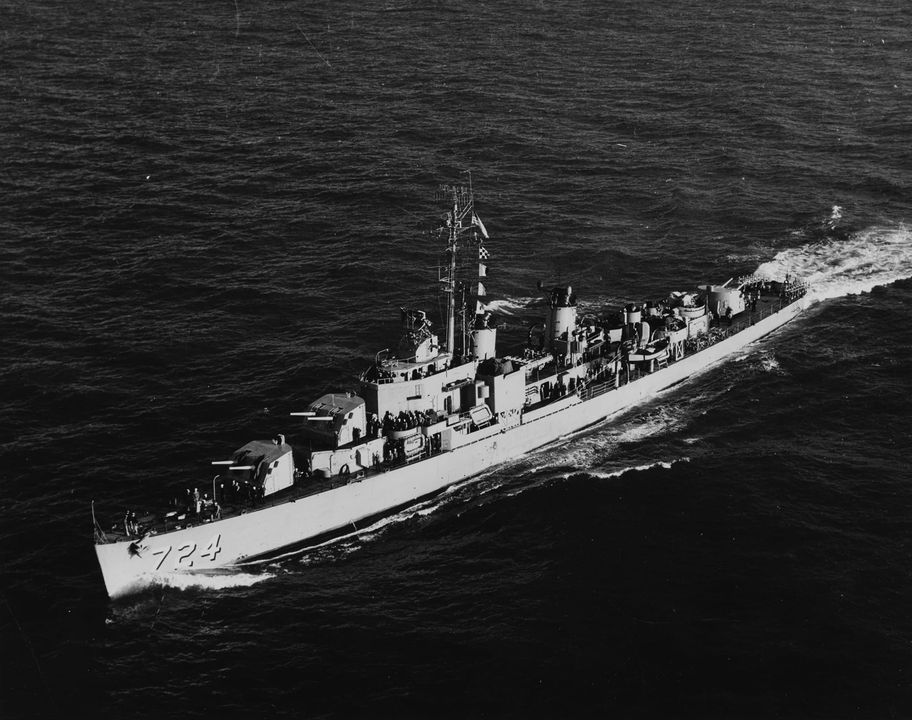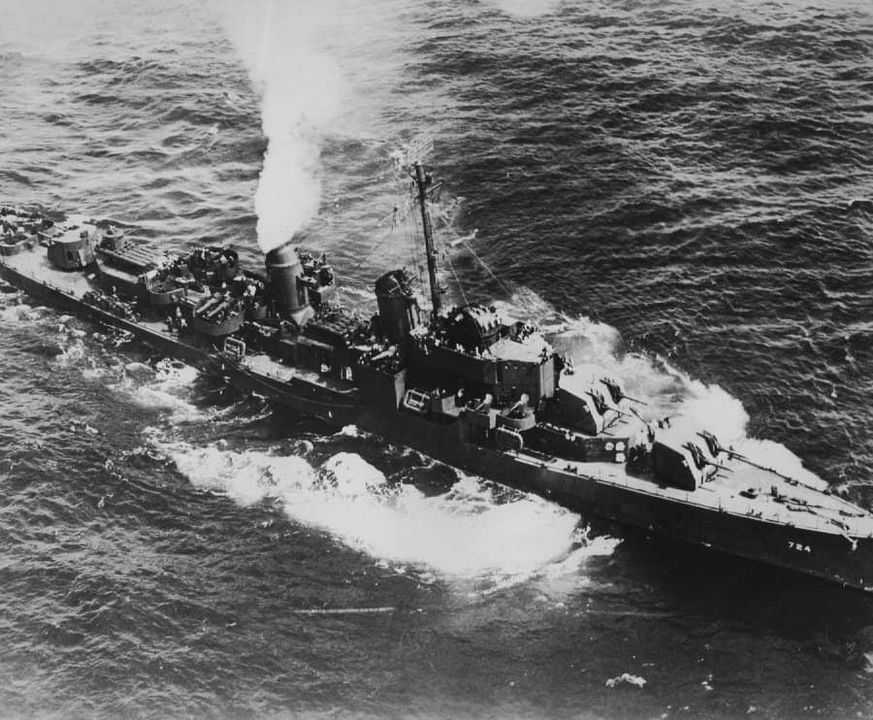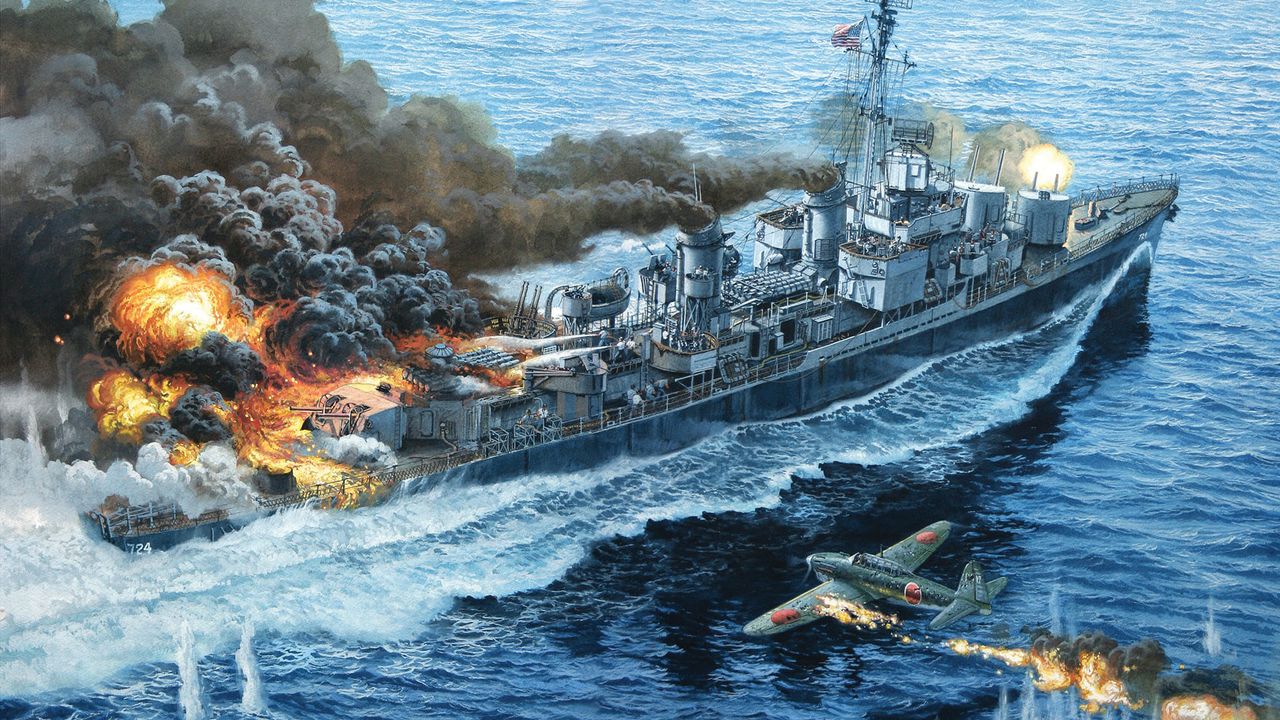The Destroyer that was too Angry to Die

Launched in 1943, the U.S.S. Laffey was an Allen M. Sumner-class destroyer of the United States Navy and interestingly, the second destroyer to carry the name “Laffey” during WWII. The previous vessel being a Benson-class that was sunk during the Guadalcanal campaign, after toe to toe with the Japanese Battleship Hiei.
The Allen M. Sumner-class was a step up from the previous Fletcher-class, as it carried more guns, had better maneuverability and most importantly, had better Anti-Aircraft capability. Perfect for what the U.S. experienced in the Pacific. After a stint in the Atlantic and even taking part in the D-Day invasion at Utah Beach, the Laffey was then deployed to the Pacific in September of that year, where she would be kept quite busy. But it was during the Okinawa campaign where Laffey would see her most ferocious action.
Engagement at Okinawa

In April of 1945, Laffey was assigned to radar picket station 1, about 30 miles north of Okinawa. She was part of the massive screen of destroyers that were being used to detect incoming Japanese aircraft, and Picket Station 1 was the closest to the Japanese mainland. It also didn’t help that the last two vessels that had been stationed there had come under Kamikaze attacks in the previous weeks.
At 8:30 AM, a lone Aichi D3A appeared near Laffey and was successfully driven off by Anti-Aircraft fire. But this was only the recon aircraft, and just 12 minutes later, a large force of Japanese fighters and bombers appeared on radar. What followed next was 80 minutes of absolute hell.
The Ferocious Battle

As the Laffey would come under attack by 30 enemy aircraft, in the first 12 minutes, the gunners of Laffey would down 7 aircraft before being hit by a Kamikaze. They continued to fight, and five minutes later, Laffey was struck by a second Kamikaze. Then, 2 minutes later, a third Kamikaze hit the ship, followed by a direct bomb hit from a fourth aircraft. Then, a fourth Kamikaze hit the ship, followed by another bomb hit. Three more Kamikazes and two more bombs would strike the Laffey, yet not only were the damages being contained, the ship continued to return fire. But as the crew began to struggle with the numerous fires on board, one of the officers asked the captain if they were to abandon ship.
To which the Captain, a one Commander Frederick Becton, replied, “I’ll never abandon ship as long as a single gun will fire.” Somehow, the Laffey was able to survive the Japanese onslaught long enough for American fighters to come to the rescue and drive off the remaining enemy aircraft. And if that was not enough, the Destroyer was able to make it back to the continental U.S. for repairs and returned to service.
Post-War Service and Legacy
After being placed in reserve in 1947, Laffey was reactivated in 1951 and would remain in active duty throughout the Korean and Vietnam wars. Finally, being decommissioned in 1975, she was the last Sumner-class to be retired from U.S. service.
You can actually visit the ship today, as she is currently a museum ship at Patriots Point in Mount Pleasant, South Carolina.










